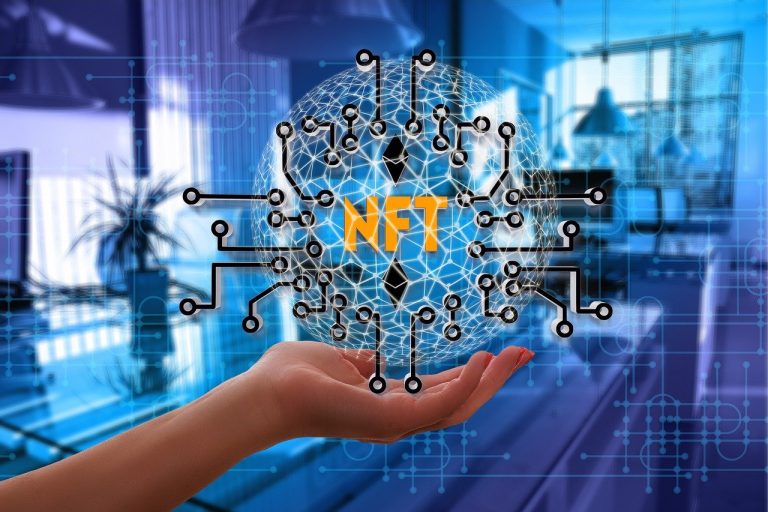Cryptocurrency has come a long way since the launch of Bitcoin in 2009. Once seen as a fringe experiment, crypto is now a multi-trillion-dollar global ecosystem involving finance, art, gaming, identity, and more. As we approach the end of the 2020s, the big question looms: what will cryptocurrency look like by 2030?
To answer that, we turn to insights from economists, blockchain developers, venture capitalists, and policy analysts. Their predictions reveal a future shaped by mass adoption, regulatory clarity, technological innovation, and new economic models.
Here’s what experts say about the crypto landscape in 2030.
1. Mainstream Adoption Will Be a Reality
Many experts agree that by 2030, cryptocurrency will no longer be an outsider to the financial world—it will be fully integrated into mainstream society.
Everyday Use and Acceptance
Cryptos like Bitcoin, Ethereum, and emerging stablecoins are expected to become widely accepted forms of payment. From buying coffee to paying rent, digital assets could be used as casually as credit cards or mobile wallets are today.
Caitlin Long, CEO of Custodia Bank, believes that stablecoins—crypto tokens pegged to fiat currencies—will drive this shift. “We’ll see stablecoins used regularly in commerce, especially in countries with unstable currencies. That’s already happening, and by 2030, it will be widespread.”
Seamless Integration
Fintech companies and traditional banks are predicted to offer crypto-friendly services. Wallets, exchanges, and apps will likely be integrated into mainstream platforms like PayPal, Apple Pay, and traditional banking apps. The user experience will become simpler, making crypto invisible in the backend but critical to the system.
2. Massive Advances in Blockchain Technology
By 2030, blockchain—the underlying technology of cryptocurrencies—will evolve significantly. Scalability, speed, and energy efficiency are areas of active innovation today, and many expect them to be resolved within the decade.
Energy-Efficient Blockchains
After Ethereum’s successful shift from proof-of-work to proof-of-stake, more networks are moving toward low-energy consensus mechanisms. Experts foresee an era where blockchain is environmentally sustainable, addressing one of the main criticisms of crypto’s early years.
Silvio Micali, founder of Algorand and Turing Award-winning cryptographer, believes we’ll see “green” blockchains dominate. “Blockchain will no longer be a threat to the environment. Efficient protocols will support global-scale applications,” he says.
Interoperability Between Networks
Currently, blockchain ecosystems are often siloed. Experts expect a future where different blockchains seamlessly communicate, allowing assets and data to move freely across networks. This “Internet of Blockchains” will enable more powerful decentralized applications (dApps) and a unified crypto experience.
3. Clear Global Regulations Will Define the Landscape
One of the most pressing challenges for crypto today is regulatory uncertainty. By 2030, experts anticipate well-defined legal frameworks across most major countries.
Regulatory Maturity
According to Hester Peirce, Commissioner at the U.S. Securities and Exchange Commission (SEC), “We’ll have a much clearer idea of which digital assets are considered securities, which are commodities, and how they can be legally traded.”
Such clarity will give confidence to institutional investors and businesses, leading to greater capital inflows and safer participation in crypto markets.
Government-Issued Digital Currencies
By 2030, Central Bank Digital Currencies (CBDCs) are expected to become standard in many nations. Unlike decentralized cryptocurrencies, CBDCs are issued and controlled by governments. However, their existence is likely to coexist rather than compete with decentralized digital assets.
China’s digital yuan, already in use, is a sign of things to come. The European Union, U.S., and dozens of other countries are actively developing their own versions. According to analysts, this will normalize the idea of digital currency, further pushing crypto into everyday life.
4. Crypto Will Redefine the Internet (Web3)
The concept of Web3—a decentralized version of the internet powered by blockchain—will become more prominent by 2030. In this new model, users will own their data, creators will control their content, and platforms will be run by communities rather than corporations.
Decentralized Identity and Ownership
Digital identity systems using blockchain will allow individuals to own and control their personal data, reducing reliance on centralized entities like Google or Facebook. Login systems using crypto wallets instead of email/passwords will become more common.
Meanwhile, NFTs (non-fungible tokens) will go beyond art and music to represent things like event tickets, medical records, educational credentials, and even real estate.
Rise of Decentralized Autonomous Organizations (DAOs)
DAOs are blockchain-based groups that operate without central leadership, using code and community governance to make decisions. Experts predict DAOs will be commonplace in 2030, managing investment funds, nonprofit organizations, and even businesses.
Linda Xie, co-founder of Scalar Capital, notes: “DAOs will allow people around the world to collaborate and build companies or causes without knowing each other or trusting a central authority. This will be one of crypto’s most revolutionary impacts.”
5. Finance Will Be Radically Transformed
By 2030, crypto will have matured into a central pillar of the financial system.
Decentralized Finance (DeFi) Becomes Institutional
DeFi platforms currently allow users to lend, borrow, and earn interest without banks. While still niche today, experts believe DeFi will be regulated, secure, and accessible to the masses by 2030. Banks and asset managers may integrate with these platforms or build their own.
Robert Leshner, founder of Compound Finance, predicts, “Traditional finance will absorb DeFi, just like the internet absorbed newspapers and retail stores. It’s not a question of if, but when.”
Global Financial Inclusion
Billions of people remain unbanked. Cryptocurrencies offer a solution through mobile-based financial tools. By 2030, experts expect crypto to serve as a gateway to financial services for underserved communities around the world.
Already, platforms like Celo and Stellar are building crypto infrastructure tailored for low-income and mobile-first populations.
6. New Challenges Will Emerge
While the future is bright, experts also highlight challenges that must be addressed.
Security and Privacy
As more value flows into the crypto space, cyber threats will increase. Wallet security, private key management, and protection from hacks will need to evolve. At the same time, there will be debates over privacy, surveillance, and user protection in an increasingly digital world.
Centralization Risks
Ironically, some crypto platforms today are becoming more centralized, relying on a few validators or developers. Ensuring that crypto remains decentralized and democratic will be a key concern as it grows in popularity.
A Mature and Integrated Ecosystem by 2030
By 2030, cryptocurrency will no longer be a novelty. It will be a core part of daily life, influencing how we pay, invest, govern, work, and connect. The crypto ecosystem is expected to be more user-friendly, regulated, and accessible, opening up entirely new economic and social models.
From programmable money and decentralized banks to blockchain-based governance and digital identities, crypto’s transformation will extend well beyond finance. According to the experts, the next five years are not just about evolution—but revolution.
The decade ahead will determine how deeply crypto weaves into the fabric of our society. If current trends continue, by 2030, digital assets could be as ordinary—and as essential—as the smartphone in your pocket.




